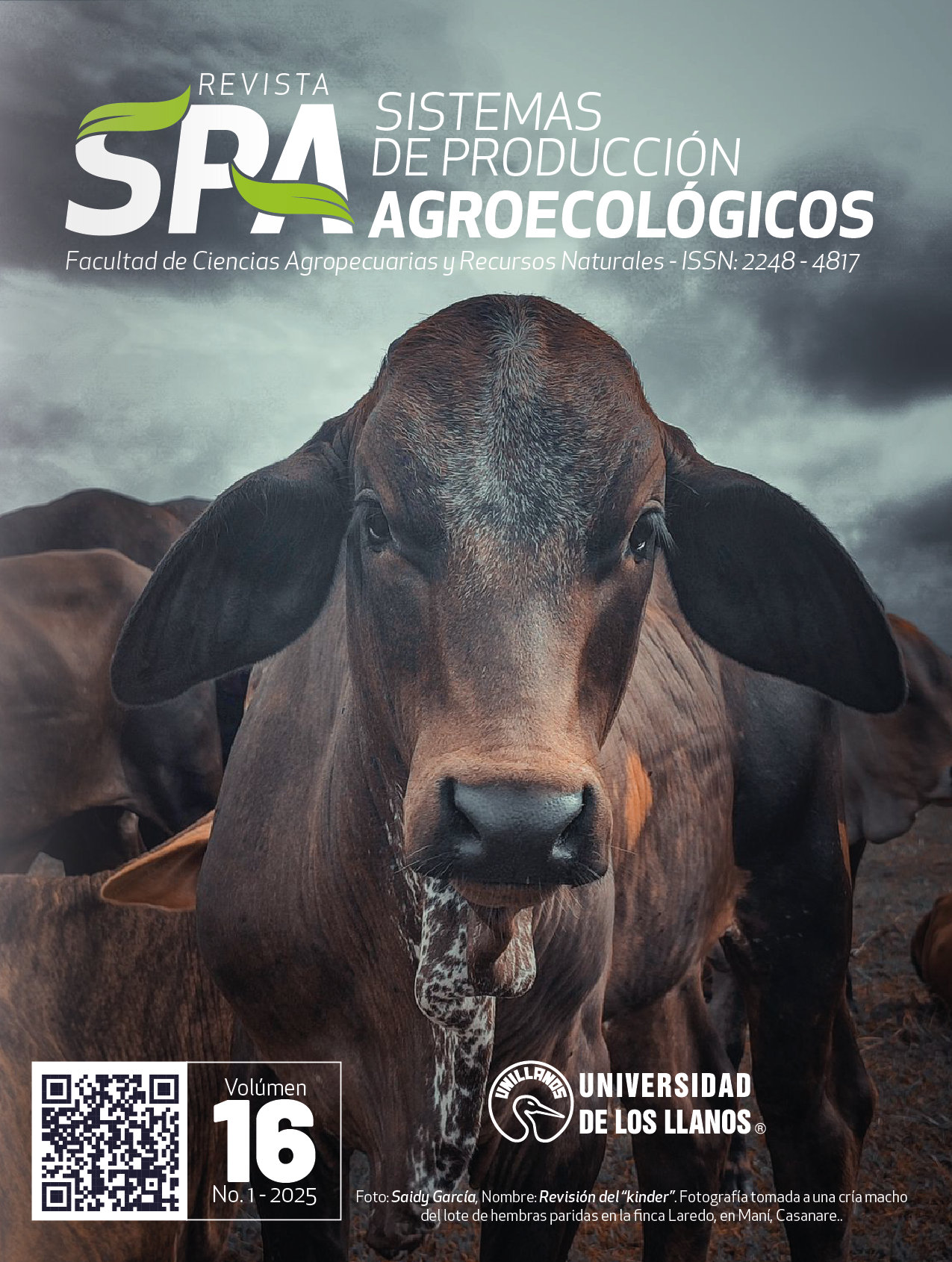Impacto de la contaminación acuática por antibióticos en la resistencia de Pseudomonas aeruginosa
Impact of aquatic antibiotic pollution on Pseudomonas aeruginosa resistance
Contenido principal del artículo
Resumen
El uso excesivo e indebido de antibióticos ha dado lugar a la presencia de estas sustancias en los recursos hídricos, desencadenando el desarrollo de resistencia antimicrobiana en bacterias de relevancia en salud pública, como Pseudomonas aeruginosa. Este microorganismo patógeno oportunista, reconocido por su resistencia intrínseca, puede causar infecciones en seres humanos, animales y plantas. A nivel mundial, se han detectado diferentes concentraciones de antibióticos en aguas dulces, y según la evidencia incluso en concentraciones subinhibitorias. Pseudomonas aeruginosa es capaz de desarrollar mutaciones en genes relacionados con porinas, bombas de expulsión y enzimas; además, tiene la capacidad de adquirir genes de resistencia, generar células persistentes y formar comunidades altamente organizadas, conocidas como biopelículas, que funcionan como escudos protectores. Estas resistencias, tanto adquiridas como adaptativas, son provocadas por la presencia de agentes antimicrobianos, la presión selectiva ejercida y factores ambientales. Es importante resaltar que la adaptación de Pseudomonas aeruginosa a la contaminación de aguas dulces con antibióticos es un tema crucial en la vigilancia y el manejo de la contaminación ambiental. Esto es esencial para prevenir la propagación de la resistencia bacteriana, protegiendo tanto la salud humana como el equilibrio ambiental.
Descargas
Detalles del artículo
Palabras clave
Referencias
• Agunbiade, F. O. y Moodley, B. (2014). Pharmaceuticals as emerging organic contaminants in Umgeni River water system, KwaZulu-Natal, South Africa. Environmental monitoring and assessment, 186, 7273-7291. https://doi.org/10.1007/s10661-014-3926-z
• Ash, R. J., Mauck, B. y Morgan, M. (2002). Antibiotic Resistance of Gram-Negative Bacteria in Rivers, United States. Emerging Infectious Diseases, 8(7), 713-716. https://doi.org/10.3201/eid0807.010264
• Azam, M. W. y Asad, U. K. (2019). Updates on the Pathogenicity Status of Pseudomonas Aeruginosa. Drug Discovery Today, 24(1), 350-359. https://doi.org/10.1016/j.drudis.2018.07.003
• Bolivar-Vargas, A. F., Torres-Caycedo, M. I. y Sánchez-Neira, Y. (2021). Biofilms de Pseudomonas Aeruginosa como mecanismos de resistencia y tolerancia a antibióticos. Revista de La Facultad de Ciencias de La Salud Universidad Del Cauca, 23(2), 47-57. https://doi.org/10.47373/rfcs.2021.v23.1780
• Borriello, G., Werner, E., Roe, F., Kim, A. M., Ehrlich, G. D. y Stewart, P. S. (2004). Oxygen Limitation Contributes to Antibiotic Tolerance of Pseudomonas Aeruginosa in Biofilms. Antimicrobial Agents and Chemotherapy, 48(7), 2659–2664. https://doi.org/10.1128/aac.48.7.2659-2664.2004
• Breidenstein, E. B., de la Fuente-Núñez, C. y Hancock, R. W. (2011). Pseudomonas aeruginosa: all roads lead to resistance. Trends in Microbiology, 19(8), 419–26. https://doi.org/10.1016/j.tim.2011.04.005
• Campisano, A., Schroeder, C., Schemionek, M., Overhage, J. y Rehm, B. H. (2006). PslD is a secreted protein required for biofilm formation by Pseudomonas aeruginosa. Applied and Environmental Microbiology, 72(4), 3066-3068. https://doi.org/10.1128/AEM.72.4.3066-3068.2006
• Chambers, J. R., Liao, J., Schurr, M. J. y Sauer, K. (2014). BrlR from Pseudomonas aeruginosa is ac‐di‐GMP‐responsive transcription factor. Molecular Microbiology, 92(3), 471-487. https://doi.org/10.1111/mmi.12562
• Ciofu, O. Y Tolker-Nielsen, N. (2019). Tolerance and resistance of Pseudomonas aeruginosa biofilms to antimicrobial agents—how P. aeruginosa can escape antibiotics. Frontiers in Microbiology, 10, 913. https://doi.org/10.3389/fmicb.2019.00913
• Comber, S., Gardner, M., Sörme, P., Leverett, D. y Ellor, B. (2018). Active pharmaceutical ingredients entering the aquatic environment from wastewater treatment works: a cause for concern?. Science of the total environment, 613, 538-547. https://doi.org/10.1016/j.scitotenv.2017.09.101
• Colvin, K. M., Gordon, V. D., Murakami, K., Borlee, B. R., Wozniak, D. J., Wong, G. C. y Parsek, M. R. (2011). The pel polysaccharide can serve a structural and protective role in the biofilm matrix of Pseudomonas aeruginosa. PLoS Pathogens, 7(1), e1001264. https://doi.org/10.1371/journal.ppat.1001264
• Danner, M. C., Robertson, A., Behrends, V. y Reiss, J. (2019). Antibiotic pollution in surface fresh waters: occurrence and effects. Science of The Total Environment, 664, 793-804. https://doi.org/10.1016/j.scitotenv.2019.01.406
• D’Costa, V. M., King, C. E., Kalan, L., Morar, M., Sung, W. W., Schwarz, C., Froese, D., Zazula, G., Calmels, F., Debruyne, R., Golding, G. B., Poinar, H. N. y Wright, G. D. (2011). Antibiotic resistance is ancient. Nature, 477(7365), 457-461. https://doi.org/10.1038/nature10388
• Diggle, S. P. y Whiteley, M. (2020). Microbe profile: Pseudomonas aeruginosa: opportunistic pathogen and lab rat. Microbiology, 166(1), 30-33. https://doi.org/10.1099/mic.0.000860
• Espinoza-Pesantez, D. y Esparza-Sanchez, G. (2021). Resistencia enzimática en Pseudomonas aeruginosa, aspectos clínicos y de laboratorio. Revista Chilena de Infectología, 38(1), 69-80. http://dx.doi.org/10.4067/S0716-10182021000100069
• Estrada-Arriaga, E. B., Cortés-Muñoz, J. E., González-Herrera, A., Calderón-Mólgora, C. G., de Lourdes Rivera-Huerta, M., Ramírez-Camperos, E., Montellano-Palacios, L. Gelover-Santiago, S. L., Pérez-Castrejón, S., Cardoso-Vigueros, L., Martín-Domínguez, A. y García-Sánchez, L. (2016). Assessment of full-scale biological nutrient removal systems upgraded with physico-chemical processes for the removal of emerging pollutants present in wastewaters from Mexico. Science of the Total Environment, 571, 1172-1182. https://doi.org/10.1016/j.scitotenv.2016.07.118
• Folliero, V., Franci, G., Dell’Annunziata, F., Giugliano, R., Foglia, F., Sperlongano, R, De Filippis, A., Finamore, E. y Galdiero, M. (2021). Evaluation of antibiotic resistance and biofilm production among clinical strain isolated from medical devices. International Journal of Microbiology, 2021(1), 9033278. https://doi.org/10.1155/2021/9033278
• Gbylik-Sikorska, M., Posyniak, A., Mitrowska, K., Gajda, A., Błądek, T., Śniegocki, T. y Żmudzki, J. (2014). Occurrence of veterinary antibiotics and chemotherapeutics in fresh water, sediment, and fish of the rivers and lakes in Poland. Journal of Veterinary Research, 58(3), 399-404. https://doi.org/10.2478/bvip-2014-0062
• Ghafoor, A., Hay, I. D., y Rehm, B. H. (2011). Role of exopolysaccharides in Pseudomonas aeruginosa biofilm formation and architecture. Applied and Environmental Microbiology, 77(15), 5238-5246. https://doi.org/10.1128/AEM.00637-11
• Golovko, O., Kumar, V., Fedorova, G., Randak, T. y Grabic, R. (2014). Seasonal changes in antibiotics, antidepressants/psychiatric drugs, antihistamines and lipid regulators in a wastewater treatment plant. Chemosphere, 111, 418-426. https://doi.org/10.1016/j.chemosphere.2014.03.132
• Gómez-Junyent, J., Benavent, E., Sierra, Y., El Haj, C., Soldevila, L., Torrejón, B., Raul Rigo-Bonnin, R., Tubau, F., Ariza, J. y Murillo, O. (2019). Efficacy of ceftolozane/tazobactam, alone and in combination with colistin, against multidrug-resistant Pseudomonas aeruginosa in an in vitro biofilm pharmacodynamic model. International Journal of Antimicrobial Agents, 53(5), 612-619. https://doi.org/10.1016/j.ijantimicag.2019.01.010
• Gros, M., Rodríguez-Mozaz, S. y Barceló, D. (2013). Rapid analysis of multiclass antibiotic residues and some of their metabolites in hospital, urban wastewater and river water by ultra-high-performance liquid chromatography coupled to quadrupole-linear ion trap tandem mass spectrometry. Journal of Chromatography A, 1292, 173-188. https://doi.org/10.1016/j.chroma.2012.12.072
• Guénard, S., Muller, C., Monlezun, L., Benas, P., Broutin, I., Jeannot, K. y Plésiat, P. (2014). Multiple mutations lead to MexXY-OprM-dependent aminoglycoside resistance in clinical strains of Pseudomonas aeruginosa. Antimicrobial Agents and Chemotherapy, 58(1), 221-28. https://doi.org/10.1128/aac.01252-1310.1128/AAC.01252-13
• Hoyle, B. D. y Costerton, J. W. (1991). Bacterial Resistance to Antibiotics: The Role of Biofilms. Progress in Drug Research, 37, 91-105. https://doi.org/10.1007/978-3-0348-7139-6_2.
• Jackson, K. D., Starkey, M., Kremer, S., Parsek, M. R. y Wozniak, D. J. (2004). Identification of psl, a locus encoding a potential exopolysaccharide that is essential for Pseudomonas aeruginosa PAO1 biofilm formation. Journal of Bacteriology, 186(14), 4466-4475. https://doi.org/10.1128/JB.186.14.4466-4475.2004
• Jank, L., Hoff, R. B., Costa, F. J. D. y Pizzolato, T. M. (2014). Simultaneous determination of eight antibiotics from distinct classes in surface and wastewater samples by solid-phase extraction and high-performance liquid chromatography–electrospray ionisation mass spectrometry. International Journal of Environmental Analytical Chemistry, 94(10), 1013-1037. https://doi.org/10.1080/03067319.2014.914184
• Jeannot, K., Elsen, S., Köhler, T., Attree, I., van Delden, C. y Plésiat, P. (2008). Resistance and virulence of Pseudomonas aeruginosa clinical strains overproducing the mexcd-oprj efflux pump. Antimicrobial Agents and Chemotherapy, 52(7), 2455-2462. https://doi.org/10.1128/aac.01107-07
• Karruli, A., Catalini, C., D’Amore, C., Foglia, F., Mari, F., Harxhi, A., Galdiero, M., y Durante-Mangoni, E. (2023). Evidence-based treatment of Pseudomonas aeruginosa infections: a critical reappraisal. Antibiotics, 12(2), 399. https://doi.org/10.3390/antibiotics12020399
• Klein, E. Y., Van Boeckel, T. P., Martinez, E. M., Pant, S., Gandra, S., Levin, S. A., Goossens, H. y Laxminarayan, R. (2018). Global increase and geographic convergence in antibiotic consumption between 2000 and 2015. Proceedings of the National Academy of Sciences, 115(15), E3463-E3470. https://doi.org/10.1073/pnas.1717295115
• Kolpin, D. W., Furlong, E. T., Meyer, M. T., Thurman, E. M., Zaugg, S. D., Barber, L. B. y Buxton, H. T. (2002). Pharmaceuticals, hormones, and other organic wastewater contaminants in US streams, 1999− 2000: A national reconnaissance. Environmental science & technology, 36(6), 1202-1211. https://doi.org/10.1021/es011055j
• Kwan, B. W., Valenta, J. A., Benedik, M. J. y Wood, T. K. (2013). Arrested protein synthesis increases persister-like cell formation. Antimicrobial Agents and Chemotherapy, 57(3), 1468–1473. https://doi.org/10.1128/AAC.02135-12
• Langendonk, R. F., Neill, D. R. y Fothergill, J. L. (2021). The building blocks of antimicrobial resistance in Pseudomonas aeruginosa: implications for current resistance-breaking therapies. Frontiers in Cellular and Infection Microbiology, 11, 665759. https://doi.org/10.3389/fcimb.2021.665759
• Lewis, K. (2010). Persister cells. Annual Review of Microbiology, 64(1), 357-372. https://doi.org/10.1146/annurev.micro.112408.134306
• Li, X. Z. y Nikaido, H. (2009). Efflux-mediated drug resistance in bacteria: an update. Drugs, 69(12), 1555-1623. htpps://doi.org/10.2165/11317030-000000000-00000
• Linares, J. F., Moreno, R., Fajardo, A., Martínez‐Solano, L., Escalante, R., Rojo, F. y Martínez, J. L. (2010). The global regulator Crc modulates metabolism, susceptibility to antibiotics and virulence in Pseudomonas aeruginosa. Environmental Microbiology, 12(12), 3196-3212. https://doi.org/10.1111/j.1462-2920.2010.02292.x
• Locatelli, M. A. F., Sodré, F. F. y Jardim, W. F. (2011). Determination of antibiotics in Brazilian surface waters using liquid chromatography–electrospray tandem mass spectrometry. Archives of environmental contamination and toxicology, 60, 385-393. https://doi.org/ 10.1007/s00244-010-9550-1
• Ma, L., Conover, M., Lu, H., Parsek, M. R., Bayles, K. y Wozniak, D. J. (2009). Assembly and development of the Pseudomonas aeruginosa biofilm matrix. PLoS Pathogens, 5(3), e1000354. https://doi.org/10.1371/journal.ppat.1000354
• Madikizela, L. M., Tavengwa, N. T. y Chimuka, L. (2017). Status of pharmaceuticals in African water bodies: Occurrence, removal and analytical methods. Journal of environmental management, 193, 211-220. https://doi.org/10.1016/j.jenvman.2017.02.022
• Mahmood, A. R., Al-Haideri, H. H. y Hassan, F. M. (2019). Detection of antibiotics in drinking water treatment plants in baghdad city, iraq. Advances in Public Health, 2019(1), 7851354. https://doi.org/10.1155/2019/7851354
• Marr, A. K., Overhage, J., Bains, M. Y Hancock, R. E. (2007). The Lon protease of Pseudomonas aeruginosa is induced by aminoglycosides and is involved in biofilm formation and motility. Microbiology, 153(2), 474-482. https://doi.org/10.1099/mic.0.2006/002519-0
• Marti, E., Variatza, E. y Balcazar, J. L. (2014). The role of aquatic ecosystems as reservoirs of antibiotic resistance. Trends in Microbiology, 22(1), 36-41. https://doi.org/10.1016/j.tim.2013.11.001
• Martínez-Alcalá, I., Soto, J. y Lahora, A. (2020). Antibióticos como contaminantes emergentes. Riesgo ecotoxicológico y control en aguas residuales y depuradas. Ecosistemas, 29(3), 2070-2070. https://doi.org/10.7818/ECOS.2070
• Motta, S. S., Cluzel, P. y Aldana, M. (2015). Adaptive resistance in bacteria requires epigenetic inheritance, genetic noise, and cost of efflux pumps. PloS one, 10(3), e0118464. https://doi.org/10.1371/journal.pone.0118464
• Mirzaei, R., Yunesian, M., Nasseri, S., Gholami, M., Jalilzadeh, E., Shoeibi, S. y Mesdaghinia, A. (2018). Occurrence and fate of most prescribed antibiotics in different water environments of Tehran, Iran. Science of the total environment, 619, 446-459. https://doi.org/10.1016/j.scitotenv.2017.07.272
• Overhage, J., Schemionek, M., Webb, J. S. y Rehm, B. H. (2005). Expression of the psl operon in Pseudomonas aeruginosa PAO1 biofilms: PslA performs an essential function in biofilm formation. Applied and Environmental Microbiology, 71(8), 4407-4413. https://doi.org/10.1128/AEM.71.8.4407-4413.2005
• Pachori, P., Gothalwal, R. y Gandhi, P. (2019). Emergence of antibiotic resistance Pseudomonas aeruginosa in intensive care unit; a critical review. Genes & Diseases, 6(2), 109-119. https://doi.org/10.1016/j.gendis.2019.04.001
• Papadimitriou-Olivgeris, M., Jacot, D. y Guery, B. (2022). How to Manage Pseudomonas Aeruginosa Infections. En Pseudomonas aeruginosa: Biology, Pathogenesis and Control Strategies (pp. 425-445). Cham: Springer International Publishing.
• Patel, H., Buchad, H. y Gajjar, D. (2022). Pseudomonas aeruginosa persister cell formation upon antibiotic exposure in planktonic and biofilm state. Scientific Reports, 12(1), 16151. https://doi.org/10.1038/s41598-022-20323-3
• Piddock, L. J. V. (2006). Clinically relevant chromosomally encoded multidrug resistance efflux pumps in bacteria. Clinical Microbiology Reviews, 19(2), 382-402. https://doi.org/10.1128/CMR.19.2.382-402.2006
• Poirel, L., Ortiz De La Rosa, J. M., Kieffer, N., Dubois, V., Jayol, A. y Nordmann, P. (2019). Acquisition of extended-spectrum β-lactamase GES-6 leading to resistance to ceftolozane-tazobactam combination in Pseudomonas aeruginosa. Antimicrobial agents and chemotherapy, 63(1), e01809-18. https://doi.org/10.1128/AAC.01809-18
• Polianciuc, S. I., Gurzău, A. E., Kiss, B., Ştefan, M. G. y Loghin, F. (2020). Antibiotics in the environment: causes and consequences. Medicine and Pharmacy Reports, 93(3), 231. https://doi.org/10.15386/mpr-1742
• Poole, K. (2005). Aminoglycoside resistance in Pseudomonas aeruginosa. Antimicrobial Agents and Chemotherapy, 49(2), 479-487. https://doi.org/10.1128/AAC.49.2.479-487.2005
• Qin, S., Xiao, W., Zhou, C., Pu, Q., Deng, X., Lan, L., Liang, H., Song, X. y Wu, M. (2022). Pseudomonas aeruginosa: pathogenesis, virulence factors, antibiotic resistance, interaction with host, technology advances and emerging therapeutics. Signal Transduction and Targeted Therapy, 7(1), 199. https://doi.org/10.1038/s41392-022-01056-1
• Rafiee, R., Eftekhar, F., Tabatabaei, S. A. y Tehrani, D. M. (2014). Prevalence of extended-spectrum and metallo β-lactamase production in AmpC β-lactamase producing Pseudomonas aeruginosa isolates from burns. Jundishapur Journal of Microbiology, 7(9), e16436. https://doi.org/10.5812/jjm.16436
• Reis-Santos, P., Pais, M., Duarte, B., Caçador, I., Freitas, A., Pouca, A. S. V., Barbosa, J., Leston, S., Rosa, J., Ramos, F., Cabral, H. N., Gillanders, B. M. y Fonseca, V. F. (2018). Screening of human and veterinary pharmaceuticals in estuarine waters: A baseline assessment for the Tejo estuary. Marine Pollution Bulletin, 135, 1079-1084. https://doi.org/10.1016/j.marpolbul.2018.08.036
• Rodriguez-Mozaz, S., Chamorro, S., Marti, E., Huerta, B., Gros, M., Sànchez-Melsió, A., Borrego, C. M., Barceló, D. y Balcázar, J. L. (2015). Occurrence of antibiotics and antibiotic resistance genes in hospital and urban wastewaters and their impact on the receiving river. Water research, 69, 234-242. https://doi.org/10.1016/j.watres.2014.11.021
• Roulová, N., Mot’ková, P., Brožková, I. y Pejchalová, M. (2022). Antibiotic resistance of Pseudomonas aeruginosa isolated from hospital wastewater in the Czech Republic. Journal of Water and Health, 20(4), 692-701. https://doi.org/10.2166/wh.2022.101
• Serna-Galvis, E. A., Martínez-Mena, Y. L., Porras, J. y Torres-Palma, R. A. (2022). Antibióticos de alto consumo en Colombia, excreción en orina y presencia en aguas residuales-una revisión bibliográfica. Ingeniería y competitividad, 24(1). https://doi.org/10.25100/iyc.v24i1.11267
• Skiada, A., Markogiannakis, A., Plachouras, D. y Daikos, G. L. (2011). Adaptive resistance to cationic compounds in Pseudomonas aeruginosa. International Journal of Antimicrobial Agents, 37(3), 187-193. https://doi.org/10.1016/j.ijantimicag.2010.11.01910.1016/j.ijantimicag.2010.11.019
• Soares, A., Roussel, V., Pestel-Caron, M., Barreau, M., Caron, F., Bouffartigues, E., Chevalier, S. y Etienne, M. (2019). Understanding ciprofloxacin failure in Pseudomonas aeruginosa biofilm: persister cells survive matrix disruption. Frontiers in Microbiology, 10. doi: 10.3389/fmicb.2019.02603
• Song, Fangchao, Hao Wang, Karin Sauer, and Dacheng Ren. (2018). Cyclic-Di-GMP and OprF Are Involved in the Response of Pseudomonas Aeruginosa to Substrate Material Stiffness during Attachment on Polydimethylsiloxane (PDMS). Frontiers in Microbiology, 9. https://doi.org/10.3389/fmicb.2019.02603
• Spongberg, A. L., Witter, J. D., Acuña, J., Vargas, J., Murillo, M., Umaña, G., Gómez, E. y Perez, G. (2011). Reconnaissance of selected PPCP compounds in Costa Rican surface waters. Water research, 45(20), 6709-6717. https://doi.org/10.1016/j.watres.2011.10.004
• Tahrani, L., Van Loco, J., Ben Mansour, H. y Reyns, T. (2016). Occurrence of antibiotics in pharmaceutical industrial wastewater, wastewater treatment plant and sea waters in Tunisia. Journal of water and health, 14(2), 208-213. https://doi.org/10.2166/wh.2015.224
• Torrens, G., Hernández, S. B., Ayala, J. A., Moya, B., Juan, C., Cava, F. y Oliver, A. (2019a). Regulation of AmpC-driven β-lactam resistance in Pseudomonas aeruginosa: different pathways, different signaling. MSystems, 4(6), 10-1128. https://doi.org/10.1128/mSystems.00524-19
• Tran, N. H., Hoang, L., Nghiem, L. D., Nguyen, N. M. H., Ngo, H. H., Guo, W., Trinh, Q. T., Mai, N. H., Chen, H., Nguyen, D. D., Ta, T. T. y Gin, K. Y. H. (2019). Occurrence and risk assessment of multiple classes of antibiotics in urban canals and lakes in Hanoi, Vietnam. Science of the Total Environment, 692, 157-174. https://doi.org/10.1016/j.scitotenv.2019.07.092
• Valdés, M. E., Santos, L. H., Castro, M. C. R., Giorgi, A., Barceló, D., Rodríguez-Mozaz, S. y Amé, M. V. (2021). Distribution of antibiotics in water, sediments and biofilm in an urban river (Córdoba, Argentina, LA). Environmental Pollution, 269, 116133. https://doi.org/10.1016/j.envpol.2020.116133
• Verlicchi, P., Al Aukidy, M., Galletti, A., Petrovic, M. y Barceló, D. (2012). Hospital effluent: investigation of the concentrations and distribution of pharmaceuticals and environmental risk assessment. Science of the total environment, 430, 109-118. https://doi.org/10.1016/j.scitotenv.2012.04.055
• Viana, P., Meisel, L., Lopes, A., de Jesus, R., Sarmento, G., Duarte, S., Sepodes, B., Fernandes, A., Correia, dos S. M. M., Almeida, A. y Oliveira, M. C. (2021). Identification of antibiotics in surface-groundwater. A tool towards the ecopharmacovigilance approach: A portuguese case-study. Antibiotics, 10(8), 888. https://doi.org/10.3390/antibiotics10080888
• Viducic, D., Ono, T., Murakami, K., Susilowati, H., Kayama, S., Hirota, K. y Miyake, Y. (2006). Functional analysis of spoT, relA and dksA genes on quinolone tolerance in Pseudomonas aeruginosa under nongrowing condition. Microbiology and Immunology, 50(4), 349-357. https://doi.org/10.1111/j.1348-0421.2006.tb03793.x
• Voolaid, V., Jõers, A., Kisand, V. y Tenson, T. (2012). Co-occurrence of resistance to different antibiotics among aquatic bacteria. BMC Microbiology, 12(1), 225. https://doi.org/10.1186/1471-2180-12-225
• Whitchurch, C. B., Tolker-Nielsen, T., Ragas, P. C. y Mattick, J. S. (2002). Extracellular DNA required for bacterial biofilm formation. Science, 295(5559), 1487. https://doi.org/10.1126/science.295.5559.1487
• Yamaguchi, Y., Park, J. H. y Inouye, M. (2011). Toxin-antitoxin systems in bacteria and archaea. Annual Review of Genetics, 45(1), 61–79. https://doi.org/10.1146/annurev-genet-110410-132412
• Yu, X., Tang, X., Zuo, J., Zhang, M., Chen, L. y Li, Z. (2016). Distribution and persistence of cephalosporins in cephalosporin producing wastewater using SPE and UPLC–MS/MS method. Science of the total environment, 569, 23-30. https://doi.org/10.1016/j.scitotenv.2016.06.113
• Zadeh, R. G., Kalani, B. S., Ari, M. M., Talebi, M., Razavi, S. y Jazi, F. M. (2022). Isolation of persister cells within the biofilm and relative gene expression analysis of type II toxin/antitoxin system in Pseudomonas aeruginosa isolates in exponential and stationary phases. Journal of Global Antimicrobial Resistance, 28, 30-37. https://doi.org/10.1016/j.jgar.2021.11.009
• Žiemytė, M., Carda-Diéguez, M., Rodríguez-Díaz, J. C., Ventero, M. P., Mira, A. y Ferrer, M. D. (2021). Real-time monitoring of Pseudomonas aeruginosa biofilm growth dynamics and persister cells’ eradication. Emerging Microbes & Infections , 10(1), 2062-2075. https://doi.org/10.1080/22221751.2021.1994355
• Zorita, S., Mårtensson, L. y Mathiasson, L. (2009). Occurrence and removal of pharmaceuticals in a municipal sewage treatment system in the south of Sweden. Science of the total environment, 407(8), 2760-2770. https://doi.org/10.1016/j.scitotenv.2008.12.030
• Zuccato, E., Castiglioni, S., Bagnati, R., Melis, M. y Fanelli, R. (2010). Source, occurrence and fate of antibiotics in the Italian aquatic environment. Journal of hazardous materials, 179(1-3), 1042-1048. https://doi.org/10.1016/j.jhazmat.2010.03.110


 PDF
PDF
 FLIP
FLIP








